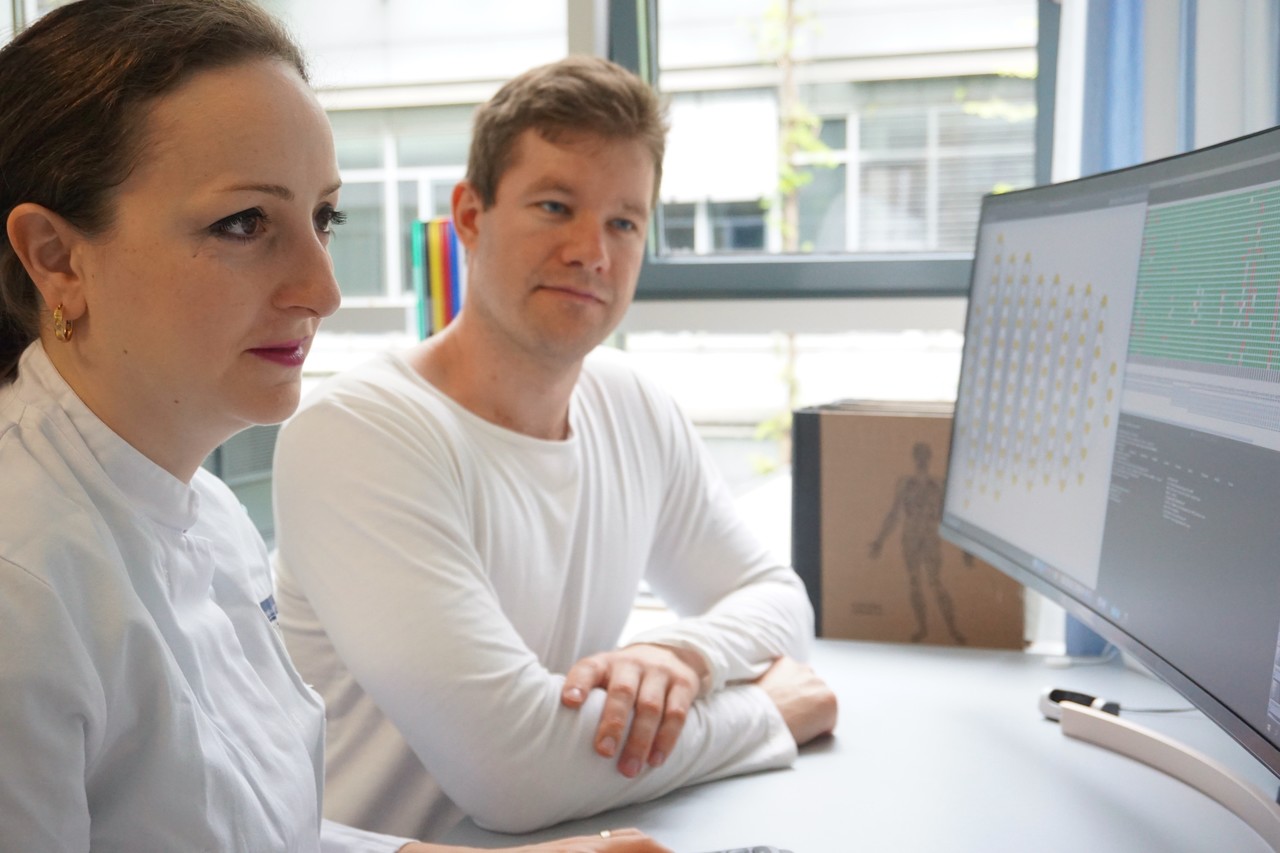The discovery of troponin as a biomarker has revolutionized diagnosis of myocardial infarction, which saves thousands of lives every year. Nevertheless, there are areas in which this test has its limits. These include unstable angina pectoris, in which patients have symptoms typical of a heart attack, but the troponin levels are not typical of myocardial infraction and the ECG is often unremarkable.
It is difficult for the medical staff to decide how to continue treating the patient. This is because similar pain can occur in a variety of diseases, for example orthopaedic problems. The resulting time-consuming process of serial blood sampling over several hours, stress testing and non-invasive imaging leads to overcrowding of chest pain units and high costs.
Prof. Benjamin Meder and his colleague Dr. Elham Kayvanpour from the University Hospital of Heidelberg have found a new approach for the early and safe diagnosis of unstable angina pectoris in patients suffering from chest pain by combining artificial intelligence, i.e. neural networks, and certain RNA molecules, the microRNAs.
The doctors second brain
Meder uses a comparison to illustrate how neural networks function: Similar to the tens of thousands of nerve cells in our brain, mathematical functions are interconnected in several layers in this artificial intelligence. When we see a hamburger, for example, the brain registers this pattern and our mouths water as a reaction. We recognize this type of food no matter how many beef patties, salad leaves or tomato slices are stacked on top of each other.
The neural networks of the Heidelberg researchers use data on a specific group of microRNAs to calculate whether or not unstable angina pectoris is present. They function robustly similar to human brains, and even when there are biological fluctuations, they come to the right result. "It is almost frightening how powerful neural networks are," says Meder.
Sets of molecules provide crucial information
Within the cell, microRNAs are important players in a complex network that regulates which genes are active. When disorders occur, the cell activates this regulatory network. This happens, for example, when a heart attack is imminent: damaged blood vessels, inflammatory processes or blood clotting events lead to microRNAs that are active other than in a healthy state. Both Meder’s and other research groups have already discovered numerous such molecules.
First author Kayvanpour started by determining which microRNAs are generally active in patients suspected of having a heart attack, thus creating a kind of snapshot of cellular processes. She then further analysed over 2000 microRNAs and confirmed candidates already known from the literature. 34 microRNAs crystallized out, on the basis of their occurrence and concentration the neuronal networks can reliably diagnose unstable angina pectoris. Kayvanpour's work is one of the first studies to use artificial intelligence to evaluate and link the profiles of RNA molecules to clinical diagnosis.
Flood of information desired
Neuronal networks are also a promising approach for the clinic because they can process innumerable pieces of information within a very short time, which is rather difficult for human beings, especially in an emergency situation. In the future, this artificial intelligence could therefore be used to evaluate data from several sources such as cardiac imaging, biomarkers and ECG together, thus enabling even more precise diagnoses.
"We still can't use our approach in the clinic," says Meder. Although the neural networks evaluate the information entered within seconds, it still takes two to three days to create a patient's microRNA profile. Meder's team is therefore developing methods with which they can measure microRNAs very quickly. In addition, the results still have to be confirmed with data from larger patient groups as well as from other clinics before the method can enter medical practice.
Contact: Prof. Benjamin Meder, Heidelberg University Hospital, benjamin.meder(at)med.uni-heidelberg.de
Original publication: microRNA neural networks improve diagnosis of acute coronary syndrome (ACS).
Kayvanpour E, Gi WT, Sedaghat-Hamedani F, Lehmann DH, Frese KS, Haas J, Tappu R, Samani OS, Nietsch R, Kahraman M, Fehlmann T, Müller-Hennessen M, Weis T, Giannitsis E, Niederdränk T, Keller A, Katus HA, Meder B. J Mol Cell Cardiol. 2020 Apr 17:S0022-2828(20)30097-3. www.jmmc-online.com/article/S0022-2828(20)30097-3/pdf




